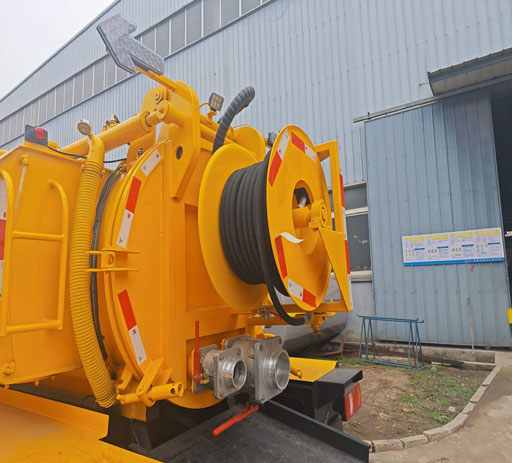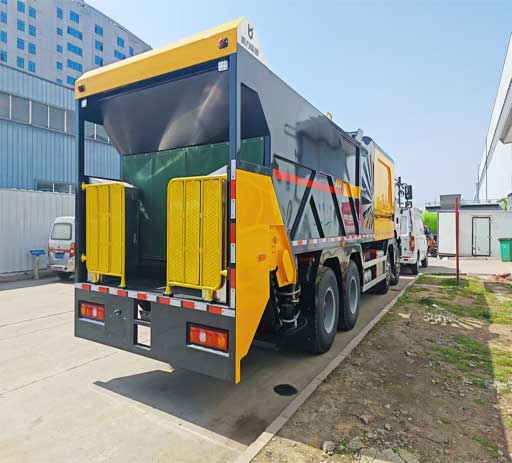What is a Fuel Tanker? A Comprehensive Guide

Introduction
A fuel tanker is a specialized vehicle designed to transport various types of fuels, such as gasoline, diesel, and jet fuel. These tankers play a crucial role in the global supply chain, ensuring that fuel is delivered safely and efficiently to gas stations, airports, and other facilities that require these energy resources. In this article, we will explore the various aspects of fuel tankers, including their types, designs, functions, regulations, and much more. By understanding what a fuel tanker is and its significance in fuel transportation, you will gain a comprehensive insight into this vital industry.
The Design and Construction of Fuel Tankers
Types of Fuel Tankers
Fuel tankers come in various types, each designed for specific transport needs. Here are the main types:
- Road Tankers: These are large trucks equipped with a tank for transporting fuel over land.
- Rail Tankers: Specialized rail cars that carry liquid fuel across long distances via railways.
- Marine Tankers: Huge ships designed to transport liquid fuels across oceans.
- Aviation Fuel Tankers: Dedicated vehicles for transporting aviation fuel to airports and military bases.
Design Features
Fuel tankers are engineered with specific design features to enhance safety and efficiency:
- Double Hulls: Many tankers are constructed with double hulls to prevent leaks and spills.
- Vapor Recovery Systems: These systems allow for the recovery of vapors during the loading and unloading processes, minimizing emissions.
- Emergency Shut-off Valves: Crucial for preventing spills in the event of an accident or tank failure.
- Insulation: Some fuel tankers have insulated tanks to maintain the required temperature of specialized fuels.
How Fuel Tankers Operate
Loading and Unloading Processes
The loading and unloading of fuel tankers involve carefully coordinated processes to ensure safety and prevent spills.
Loading Process
- The tanker arrives at a supply terminal where it is connected to loading equipment.
- Safety protocol checks are performed, including leak tests and pressure checks.
- The fuel is pumped into the tanker by trained personnel.
Unloading Process
- The tanker reaches its destination, where unloading equipment is set up.
- Similar safety checks are performed before unloading.
- The fuel is pumped out into storage tanks through hoses and specialized equipment.
Safety Regulations and Standards
Because of the potential hazards associated with transporting flammable liquids, the fuel tanker industry is subject to stringent safety regulations. Key organizations involved include:
- Department of Transportation (DOT): Sets regulations for fuel transport vehicles.
- Environmental Protection Agency (EPA): Ensures that fuels meet environmental standards.
- International Maritime Organization (IMO): Regulates marine transport, including oil tankers.
Types of Fuels Transported by Fuel Tankers

Common Fuels Carried
Fuel tankers transport a wide variety of liquids. The most common fuels include:

- Gasoline: The most commonly transported fuel for automobiles.
- Diesel: Used for trucks, buses, and machinery.
- Jet Fuel: Specifically designed for aircraft engines.
- Biodiesel and Ethanol: Alternative fuels gaining popularity.
Specialized Fuels
In addition to common fuels, fuel tankers may also transport specialized fuels like:
- Heating Oil: Used for residential and commercial heating.
- Liquefied Petroleum Gas (LPG): A mixture of propane and butane used as fuel.
- AdBlue: A solution used to reduce NOx emissions in diesel engines.
The Role of Technology in Fuel Tankers
Monitoring Systems
Modern fuel tankers are equipped with advanced technology to enhance their efficiency and safety:
- GPS Tracking: Allows real-time monitoring of the location and route of the tanker.
- Telematics: Systems that provide data on fuel consumption, vehicle performance, and driver behavior.
- Automated Safety Features: Alerts and systems that help prevent accidents and spills.
Future Innovations
The fuel tanker industry is on the cusp of significant changes, including:
- Electric and Hybrid Tankers: To reduce carbon footprints and enhance sustainability.
- Autonomous Vehicles: Potential for driverless fuel tankers that operate more efficiently.
- Advanced Materials: Development of lighter and more durable tank materials to improve fuel efficiency and safety.
Challenges Facing the Fuel Tanker Industry
Environmental Concerns
One of the major challenges for the fuel tanker industry is environmental impact. Key issues include:
- Spills and Leaks: Accidental spills can have devastating effects on ecosystems.
- Emissions: Tanker operations contribute to air pollution and greenhouse gas emissions.
Economic Factors
Economic shifts also impact the fuel tanker industry. Fluctuations in oil prices can affect transportation costs and demand for fuels, while also pushing the industry to innovate and become more cost-effective.
Comparing Fuel Tankers to Other Transportation Vehicles
| Type of Vehicle | Primary Use | Advantages | Disadvantages |
|---|---|---|---|
| Fuel Tanker | Transporting fuel | Highly mobile, able to access remote areas | Risk of spills and accidents |
| Rail Tanker | Long-distance fuel transport | Cost-effective for bulk transport | Limited by rail infrastructure |
| Marine Tanker | International fuel transport | Massive cargo capacity | High risk during loading/unloading |
Practical Tips for Fuel Delivery Companies
Fleet Management
- Invest in GPS and telematics for efficient route planning and monitoring.
- Regularly train drivers on safety and emergency procedures.
- Implement a strict maintenance schedule for vehicles to prevent breakdowns.
Environmental Practices
- Utilize vapor recovery systems to minimize emissions during operations.
- Develop a spill response plan and conduct regular drills.
- Consider alternative fuels, such as biodiesel or LPG, in company operations.
Frequently Asked Questions (FAQs)
What is the capacity of a typical fuel tanker?
The capacity of a fuel tanker varies, but most road tankers can hold between 5,000 to 11,000 gallons of fuel.
How are fuel tankers cleaned?
Fuel tankers are cleaned using specialized equipment to remove residues and ensure safety for the next load. This process often requires washing the interior with specific cleaning agents suitable for the type of fuel transported.
What are the licensing requirements for operating a fuel tanker?

Drivers must possess a commercial driver’s license (CDL), often with a specialized endorsement for transporting hazardous materials. Additionally, companies must adhere to federal and state regulations regarding fuel transport.
Are fuel tankers environmentally safe?
While fuel tankers are designed with safety features, accidents and spills can have environmental impacts. Regulations are in place to mitigate risks, but the industry is continuously working to improve safety practices.
What insurance is required for fuel transport companies?
Fuel transport companies typically need liability insurance that covers spills, accidents, and environmental damage. The specific requirements may vary depending on state and federal regulations.
How do I choose a reliable fuel tanker service?
Consider factors like the company’s safety record, certifications, customer reviews, and their compliance with regulations. It’s essential to select a service that prioritizes safety and has a good reputation in the industry.
